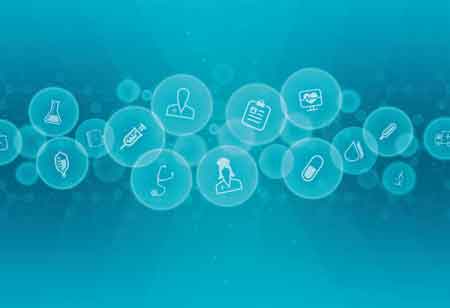Thank you for Subscribing to Healthcare Business Review Weekly Brief
Be first to read the latest tech news, Industry Leader's Insights, and CIO interviews of medium and large enterprises exclusively from Healthcare Business Review
The Impact of IoT Sensing-as-a-Service on Industry
IoT Sensing-as-a-Service enhances operational efficiency, streamlines workflows and improves compliance across healthcare, pharmaceutical and food retail industries by enabling real-time data tracking, asset management and predictive insights

By
Healthcare Business Review | Thursday, February 20, 2025
Stay ahead of the industry with exclusive feature stories on the top companies, expert insights and the latest news delivered straight to your inbox. Subscribe today.
IoT Sensing-as-a-Service enhances operational efficiency, streamlines workflows and improves compliance across healthcare, pharmaceutical and food retail industries by enabling real-time data tracking, asset management and predictive insights for better decision-making and resource optimization.
FREMONT, CA
The rise of interconnected Internet of Things (IoT) sensing and monitoring devices has opened up new possibilities for businesses in the healthcare, pharmaceutical and food retail sectors, enabling them to tackle complex operational challenges easily.
This transformation is driven by the concept of Sensing-as-a-Service, which brings new opportunities for improving workflows and enhancing customer experiences, ultimately leading to increased revenue and efficiency at scale.
Although the concept of commercial IoT devices has been around for decades, it was only in the late 1990s that the term “Internet of Things” was coined. Since then, various IoT technologies have emerged, but many were isolated, single-function solutions that struggled to integrate with broader organizational systems. However, a relatively new innovation, IoT Sensing-as-a-Service, has bridged these gaps, offering enhanced connectivity and greater functionality.
IoT Sensing-as-a-Service gives businesses real-time visibility into their operations, enabling them to track and optimize inventory, asset management, food safety and compliance. By combining IoT sensors with AI-driven analytics, organizations can automatically collect, analyze, and act on data without manual intervention.
This seamless integration provides critical insights that improve operational efficiency and decision-making processes, helping businesses overcome obstacles such as loss prevention and resource management.
IoT Sensing-as-a-Service has proven invaluable for healthcare organizations in mitigating operational risk and improving patient outcomes. The risk of missing critical care tasks is significant in understaffed hospitals, where high patient volumes strain resources.
IoT solutions can help streamline workflows by automating task management. Sensors attached to equipment such as anesthesia machines ensure that preventive maintenance is up-to-date, reducing the risk of equipment failure during critical procedures. Similarly, real-time data from patient rooms allows staff to make more informed decisions about patient transfers, optimizing resource use and reducing the chance of errors.
In the pharmaceutical industry, IoT Sensing-as-a-Service aids in maintaining compliance with stringent temperature regulations for medications and vaccines. Temperature deviations in the supply chain result in significant financial losses, but IoT-enabled solutions provide real-time monitoring of storage conditions.
These solutions improve compliance and free pharmacists from manual temperature checks, allowing them to focus more on direct patient care. The automatic collection and reporting of temperature data make it easier to comply with regulations, reducing the risk of regulatory fines and penalties.
In the food retail and grocery sectors, mitigating waste and ensuring product safety are top priorities. IoT devices enable real-time tracking of storage conditions for perishable items, helping retailers prevent waste by confirming whether products were stored within optimal temperature ranges. This reduces the need to discard products prematurely and meets food safety standards.
Additionally, IoT data enables more efficient inventory management, ensuring that products are fresh and meet quality standards when they reach consumers, improving customer satisfaction and brand loyalty.






